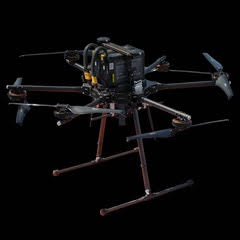The Defense Innovation Unit (DIU) has announced substantial changes to its Blue sUAS program, now immediately recognizing Green UAS certified platforms as eligible for Blue UAS Cleared status. These updates represent a more inclusive approach to certifying secure unmanned aircraft systems (UAS) for governmental and Department of Defense (DoD) use.
Major Context: Hegseth’s Memo and Program Transfer to DCMA
In July 2025, a pivotal memo from Defense Secretary Pete Hegseth injected new urgency into U.S. drone procurement. The memo responded to the accelerating pace of global drone production and battlefield innovation, calling for rapid scaling of American-made drones for military use and the removal of procurement roadblocks. To enable swifter drone acquisition and support for domestic manufacturers, the memo transferred management responsibility for the Blue sUAS list from DIU to the Defense Contract Management Agency (DCMA), effective January 1, 2026. DCMA’s greater resources and staffing are intended to address bottlenecks and open the list to more qualified U.S. drone companies.
The previous system, which was solely managed by DIU, often limited access for NDAA-compliant U.S. manufacturers due to constrained evaluation capacity. Under the new framework, DCMA will oversee a “two-tier” system, consisting of a broader Blue UAS Cleared List and a more select Blue UAS Select List, streamlining approvals while supporting national security objectives.
Key Updates from DIU
-
Green UAS Certification Now Recognized: Platforms achieving Green UAS certification—managed by the Association for Uncrewed Vehicle Systems International (AUVSI)—are now automatically added to the Blue UAS Cleared List. This aims to accelerate deployment and expand the range of compliant sUAS options.
-
Streamlined Third-Party Assessment: DIU has established recognized third-party assessors, including MTSI, AUVSI, and Dark Wolf Solutions to conduct security evaluations, reducing delays in approval and fostering a multi-stakeholder validation process.
-
Forthcoming Checklist: DIU is finalizing a standardized Blue UAS Checklist to be used across agencies, further clarifying certification procedures.
Michael Robbins, President and CEO of AUVSI, noted:
“This is a meaningful step for the broader drone ecosystem. The ability to achieve Blue UAS Cleared status through Green UAS certification provides an immediate, standards-based pathway for secure platform adoption. At the same time, work is underway to develop a unified assessment process that will support direct Blue UAS certification through approved third-party assessors. These efforts reflect a shared focus on accelerating access to trusted, domestically sourced systems.”
Implications for Manufacturers and Agencies
-
Easier Entry, Faster Approval: Qualified American drone companies can now access the government market more readily, thanks to the expanded role for third-party assessors and DCMA’s dedicated resources.
-
Broader, More Competitive Market: The two-tier system ensures more drones are approved and available, while a select subset focuses on high-priority military needs, encouraging competition and innovation.
-
User-Driven Improvements: Upcoming digital platforms will feature user ratings from field operators, further guiding agency purchases and continuous product improvement.
AUVSI’s Role with Green UAS Certification
AUVSI’s new status as a Recognized Assessor—alongside the incorporation of Green UAS certified platforms—ensures that drones meeting comprehensive security, supply chain, and connectivity standards can move quickly through the approval pipeline. The Green UAS process will offer immediate eligibility for the Blue UAS Cleared List upon certification. Find AUVSI’s guidance document here.
Looking Forward
These measures reflect a decisive step towards harmonizing commercial and defense UAS standards, addressing national demands for speed, flexibility, and the rapid fielding of trusted technology. By leveraging DCMA’s resources and a reformed certification pathway, the Pentagon positions itself to meet modern battlefield requirements and support domestic drone innovation at scale.


